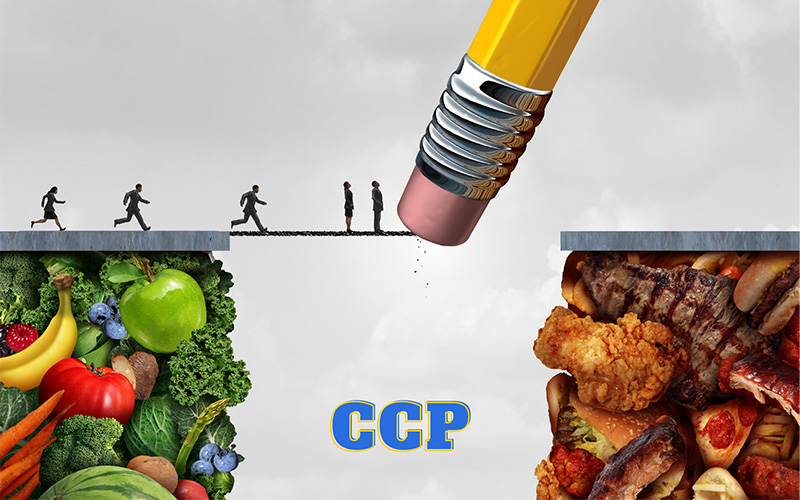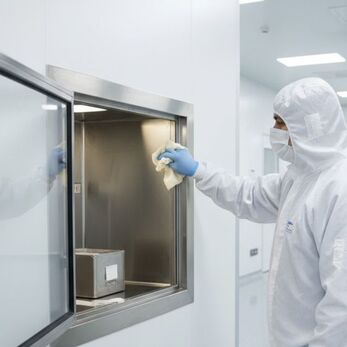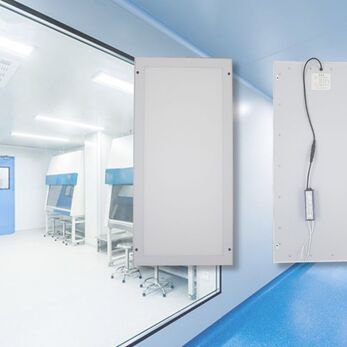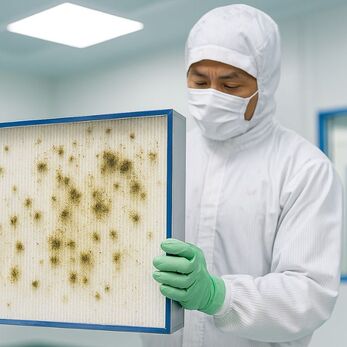What is CCP? 4 types of CCP decision trees
CCP is one of the terms often mentioned in the food-related industry.
So, what is CCP? What role does CCP play in food safety management? Let's explore this in the article below from Vietnam Cleanroom Equipment!
The concept of CCP
What is CCP?
CCP - Critical Control Point are the limiting points of the HACCP system.
CCP is primarily used in industries related to food to indicate a point/position where control methods are applied to minimize risks to an acceptable level.
All identified CCP share the commonality that they utilize specific questions for determination.

Example
|
CCP |
Critical Control Points |
|
Cook |
Time and temperature |
|
Defrost or reheat |
Time and temperature |
|
Screening |
Mesh size |
|
Disinfect with chlorine |
Concentration and volume |
Read more: Phân biệt OPRP, PRP và CCP
Timing of CCP Utilization
When should it be used?
Businesses should have a plan to implement Critical Control Point for the HACCP system as soon as it is established, especially in cases where evaluating stages is necessary to detect and prevent issues promptly, helping to minimize potential hazards to the maximum extent.

When not to use?
Do not use CCP when the hazard analysis has been completed. Additional use would result in unnecessary redundancy for the food safety control process.
4 questions to determine CCP
There are 4 questions to determine whether a hazard has reached a critical control point:
Question 1: Have any hazard control measures been applied?
Question 2: Does this step reduce the hazard to an acceptable level?
Question 3: Has the hazard exceeded the acceptable threshold, or reached an unacceptable level?
Question 4: Is there a subsequent step to further minimize the hazard? (If so, does it have the potential to reduce the hazard to an acceptable level?)
CCP Decision Tree
What is a CCP Decision Tree?
A CCP Decision Tree, or Decision tree, is a set of multiple questions (mostly in a yes/no format) designed as an objective guide to assist businesses in determining whether a specific step is a Critical Control Point (CCP) or not.
Businesses are not obligated to use a decision tree as a mandatory tool but may review previous documents and seek advice from experts.
The decision tree serves to make it easier for businesses to:
- Review, assess, and establish appropriate CCP.
- Ensure an adequate number of CCPs to maintain the effectiveness and safety of the managed subject.
- Review the results of hazard analysis and previously identified corresponding control measures to implement appropriate corrective actions.

CCP Decision Tree Function
Using decision trees flexibly will help organizations more easily identify CCPs in the HACCP process.
This is also the most commonly used type of tool in the development of the HACCP system. It enables businesses to assess the results of risk analysis and coping measures. In particular, the decision tree can be employed to eliminate adverse effects that can be controlled by applying specific methods. Remaining hazards not controlled by the analyzed methods are then identified as CCPs.
4 types of CCP Decision Tree
FDA Decision Tree
The FDA guides businesses in determining CCP based on a three-question structure:
Question 1: Does the following step consideration have any significant hazards that require control measures for elimination or prevention?
- If the answer is no, the following step is not considered as a CCP. If the answer is yes, proceed to the second question.
Question 2: Are there any control measures implemented to manage these hazards at the following step consideration?
- If the answer is no, the business needs to answer an additional sub-question: "Is control at this step truly necessary to protect food safety?"
- If the answer is yes, proceed to the third question.
Question 3: Does the control measure at this step have the capability to prevent, eliminate, or reduce the impact of the identified hazards to an acceptable level?

Codex Decision Tree
CODEX guides businesses in determining CCP based on a structure of 4 core questions:
Question 1: Does this step have any control measures or preventive measures for identified hazards? Additionally, a supplementary question businesses may consider is the necessity of control measures at this step to ensure food safety.
Question 2: Does this step have special activities established to limit or eliminate the identified hazards to an acceptable level?
Question 3: Is the hazard level of the identified hazard likely to exceed the acceptable threshold or approach an unacceptable level?
Question 4: Does the following step have any measures to eliminate or reduce the hazard to an acceptable level?
With these four questions, businesses can easily and objectively identify and evaluate steps/processes in the production process that have the potential to become CCPs. Therefore, this is also the most common and widely used model of the CCP decision tree in the food industry.

BRI Decision Tree
Unlike Codex, BRI Decision Tree structure consists 5 questions used to guide businesses in determining CCP as follows:
Question 1: Are the identified hazards controlled or prevented by prerequisite programs?
If the answer is yes, the step under consideration is not a CCP. If the answer is no, proceed to question 2.
Question 2: Are there any control measures implemented at the step where the hazard occurs?
- If the answer is no, the necessity of controlling the hazard needs to be examined. If truly necessary, the business must specify the sequence of steps along with procedures and equipment/tools used for control. If the hazard is not significant or has been controlled by prerequisite programs, the step under consideration is not a CCP.
- If the answer is yes, proceed to question 3.
Questions 3-5 have similar content to questions 2-4 in the Codex CCP decision tree presented in the previous part of the article. In general, the difference in the BRI CCP decision tree model lies in emphasizing the role of prerequisite programs when determining CCPs in the HACCP system.
ISO Decision Tree
ISO/TS 22004 provides guidance for businesses to identify CCPs based on the structure of its clauses as follows:

- Clause 7.4.2: Identify potential hazards. Determine the acceptable level of the identified hazards.
- Clause 7.4.3: Assess the level of hazard. Determine the health risk and the likelihood of the hazard occurring.
- Clause 7.4.4: Choose an appropriate combination of control and preventive measures.
- Clause 8.2: Determine the effectiveness of the selected combination of control measures.
- Clause 7.4.4: Classify the selected control measures.
- Clause 7.5: Prerequisite programs.
- Clause 7.6: HACCP plan.
Note when using decision trees
- Clearly identify whether a step is a CCP, CP, or should not be classified at all.
- Some processes/steps require accurate classification as CCP, CP, or not classified at all.
- Use when specific evaluation of each step or stage is needed to prevent, eliminate, or reduce hazards to an acceptable level.
- Apply the CCP decision tree only after the company has completed hazard analysis and hazard inventory.
- Exercise caution when using the decision tree, as hazards may need to be controlled by one or more control measures.
- During the development of the HACCP system, the CCP decision tree should be kept as a record and document so that the company can analyze and replicate the model later if issues arise.



















